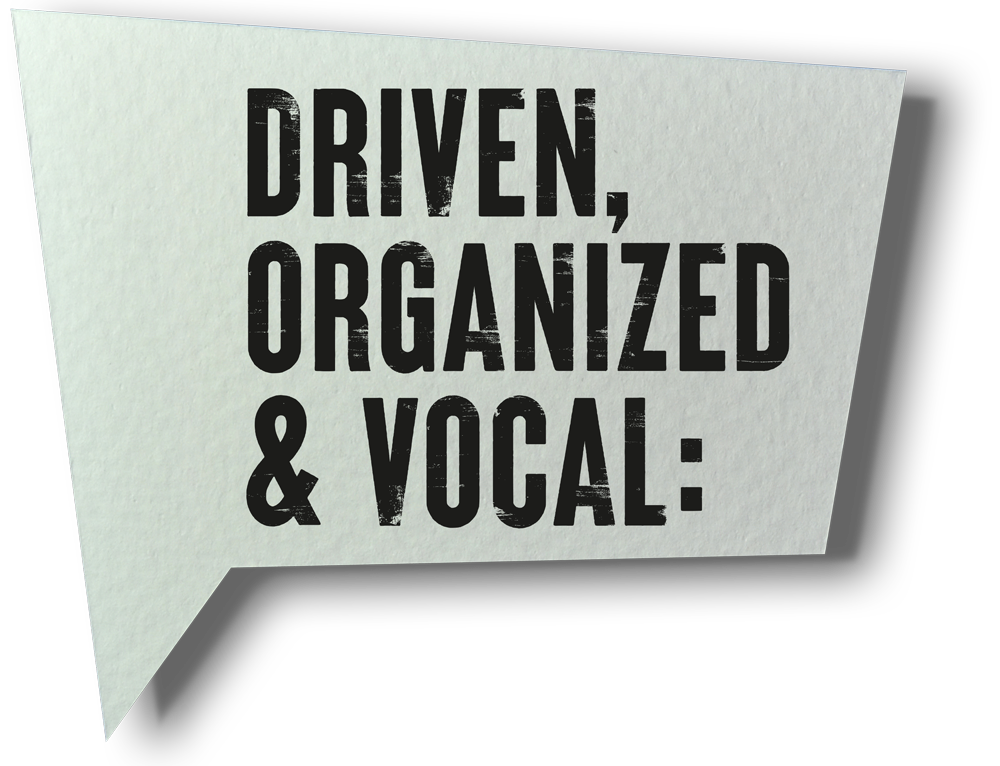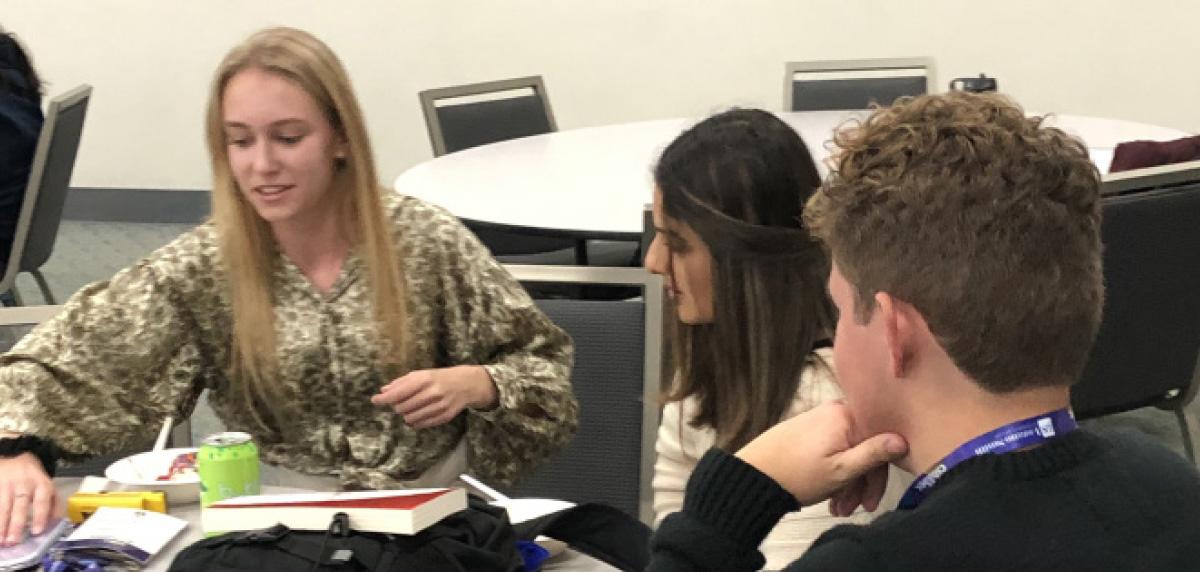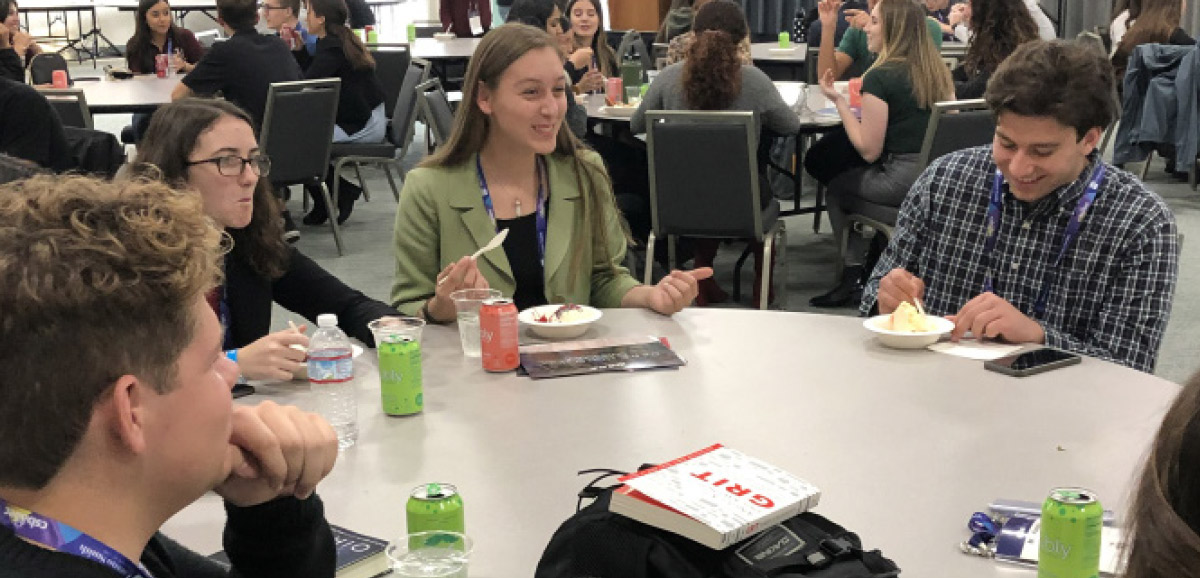
are tomorrow’s leaders


are tomorrow’s leaders

eanwhile, Frances Suavillo, the 2019–20 Los Angeles USD student board member, was 9 years old when she and her family moved to Southern California from the Philippines. Tagalog is her first language, and it is important to her that English learners are seen not as empty boxes needing to be filled with the English language, but as individuals who already have an amazing culture and speak their own beautiful language. Serving as a student board member presented an opportunity to make a difference in the lives of students who feel voiceless — and Suavillo, like so many student leaders, are determined to ensure they are heard.
“I think it would be foolish to say that students don’t care about what’s going on around them,” Suavillo said. “I’ve seen forces of students and young people just giving it their all, showing up to marches, voicing their opinions on social media, creating student coalitions to make sure that people hear them and know that they are valid, because at the end of the day, a lot of these decisions affect us directly.”
Currently, one of the only ways in which students can access governance-related professional development tailored to them is at CSBA’s Annual Education Conference and Trade Show. CSBA has hosted a student board member program at its flagship event for several years, with 2019 bringing more than 75 student participants — the largest showing to date. The growing popularity of the program is providing more robust student input and discussion on the issues that matter to them.
CSBA Director of Trainings Darcel Lee said she has noticed a sense of hope and optimism among student board members and a desire to effect lasting, positive change.
“They believe that they can make a difference and they want to equip themselves so they can make informed decisions around the work they’re doing,” Lee said. “They also feel they can bring something to the table from a different perspective because they have interest and ambition about what our schools can look like, and what our futures can be in governance and leadership. It’s nice to see that they’re encouraged and optimistic.”
Using the onset of the COVID-19 pandemic as an example, Lee said student board members were ready to roll with the punches. Those she spoke to expressed that they saw it as an opportunity to think about the future of individualized learning and expanding access to technology and home internet access.
 The nuts and bolts of
The nuts and bolts ofstudent board member
School boards may establish one or more student board member position(s) at their own discretion, reflecting the board’s desire for student participation in governance of the district. Alternatively, students can petition the board requesting the appointment of at least one student board member. When student board representation is established by petition, California law requires that student board members be chosen by students enrolled in district high schools. A same or similar process may be used for positions established at the board’s discretion. Student board members serve a one-year term, commencing July 1.
Student board members have the right to attend and participate in all open meetings of the board; be recognized as full members; receive open meeting materials and staff briefings at the same time as other board members; and, pursuant to new rules under Assembly Bill 709, receive any other materials distributed to the board between meetings as long as they do not pertain to closed session items. Student board members may cast preferential votes on all open session items, with the vote conveying a formal expression of opinion that is recorded in the minutes but which does not affect the final outcome of the vote.
student board member
 School boards may establish one or more student board member position(s) at their own discretion, reflecting the board’s desire for student participation in governance of the district. Alternatively, students can petition the board requesting the appointment of at least one student board member. When student board representation is established by petition, California law requires that student board members be chosen by students enrolled in district high schools. A same or similar process may be used for positions established at the board’s discretion. Student board members serve a one-year term, commencing July 1.
School boards may establish one or more student board member position(s) at their own discretion, reflecting the board’s desire for student participation in governance of the district. Alternatively, students can petition the board requesting the appointment of at least one student board member. When student board representation is established by petition, California law requires that student board members be chosen by students enrolled in district high schools. A same or similar process may be used for positions established at the board’s discretion. Student board members serve a one-year term, commencing July 1.
Student board members have the right to attend and participate in all open meetings of the board; be recognized as full members; receive open meeting materials and staff briefings at the same time as other board members; and, pursuant to new rules under Assembly Bill 709, receive any other materials distributed to the board between meetings as long as they do not pertain to closed session items. Student board members may cast preferential votes on all open session items, with the vote conveying a formal expression of opinion that is recorded in the minutes but which does not affect the final outcome of the vote.
Los Angeles USD
“I hope we can encourage more of our school boards to involve and engage their students in meaningful ways because they do bring a different perspective,” Lee said. “And it’s not just about involving the young people but understanding where they’re coming from and what motivates them.”
Some districts go above and beyond the basic legal requirements. Andrew Tagg, Roseville Joint Union High School District board president, said that while the district has long had six student board members that serve for a few months at a time over the course of a year, the board has recently restructured the program to make student participation more meaningful.
Now, all six students serve the entire year and three at a time attend the two monthly board meetings. Prior to each meeting, Tagg holds a conference call with the three students attending the meeting to review the agenda and answer any questions they may have so that they feel prepared to participate.
“I think we saw a lot of growth out of that change. There was continuity over the course of the year, and (the students) were more educated by following along on the topics and issues at hand,” Tagg said. “And certainly, with knowledge came a greater confidence. I think over the course of a year, we saw these are smart young students that are interested in policy decision-making, and they felt comfortable to make comments and voice their opinion through this process.”

Roseville Joint Union HSD
“I was just super impressed,” Tagg said. “(Students) have an insight that we as board members or administrators or teachers maybe don’t because they’re living it. The policies that we are deciding on directly affect the students.”
One of Fresno USD’s two student board members during the 2019–20 academic year, Joshua Camarillo, said his district was also very supportive, and provided an introduction to governance and took his input to heart. When Camarillo noted that it might be difficult for other students to follow presentations, the board began simplifying language during these presentations. Or, as in a separate instance, when observations from a middle school visit that Camarillo brought back to the board led to a refresher in social and emotional learning and intervention for school administrators.

LAUSD’s Suavillo pointed to her own board’s open communication practices as a way for governance teams throughout the state to start better using input from their student board member. She could email the other board members for support and guidance at any time and they would make a point to help and follow up. “They did an amazing job making sure I didn’t feel left out and that I had a seat at the table,” she said.
Through his work with GENup, Lee said he has heard from student board members that while their districts claim to be inclusive of student voice, they are often unable to participate in meetings despite pushing to be involved.
“I think that’s very sad, because, at the end of the day, educators, administrators, school board members — they’re all here to make the school a better learning environment for the students,” Lee said. “But, how can you effectively govern and design a school system that really helps the students when you’re missing out on their perspective and their voices? Empowering student board members to have more rights is very important.”
“The difficulties that students face in being treated as equals on the board, I truly believe is insurmountable until we’re willing to take action and move forward with giving that full vote to student board members,” said San Diego USD’s Patterson. “It’s something that needs to be a part of the discussions. I know it might take time and I know it would be difficult, but if we really want to empower student voice, we [have to] give them the ability to be change-makers in the first place.”
With the help of GENup, Patterson is among a handful of students working to establish the California Student Board Member Association. In addition to pushing ahead with plans to ensure students have more than a preferential vote, CSBMA would provide standardized support and training for student board members new to governance, be a place of open communication and exchange of best practices, and act as a unified student voice in state-level advocacy.
For Roseville Joint Union HSD board president Tagg and others, the only sticking point in CSBMA’s plan is the idea of students having more than a preferential vote. The concern has nothing to do with the capability of student board members to come to thoughtful and informed decisions, but rather, their lack of accountability to the community at large as elected officials.
“That’s part of what governance is — having some accountability to those that put you in that position,” Tagg said. “It depends on board members, but I think their recommendation vote carries a lot of weight, at least in my mind, and I think their input is extremely valuable.”
Still, Patterson said, many of his peers and students throughout the state have said they don’t believe they have any meaningful say in their district because the student who represents them on the board has no voting power.
“We see that elected officials, especially on a school board level, are often parents, educators and people that really just want to make a difference,” Patterson said. “That’s what I am too. I’m a student that wants to make a difference.”
“Obviously, at the time I was too young to understand that gap, but I saw firsthand that disparity. I think that’s what really motivated me to pursue education policy,” Lee said, noting that he’s since helped organize protests against cutting teacher salaries in Fremont, among other advocacy work.
That awareness of deep-seated inequity is what drove many of the student board members to step up to leadership roles in their districts, and, with that mindset, they are often keenly aware of issues their adult colleagues may not notice.
In San Diego, for instance, there is a significant socioeconomic divide among students. Patterson is acutely aware of the privileges he has been afforded as a white male from a wealthier household, and he said he is making sure to use that status to lift up the voices of students in his district who are regularly underrepresented.
Although he said the district has made progress in the past few years in closing the achievement gap, there is still a lot of work to be done to improve student outreach and engagement efforts.
In Patterson’s eyes, successfully engaging students will require the deconstruction of systems that currently filter out student voices if they do not have the means to participate. Though he said it makes sense that student board members are not paid like their adult counterparts, he points to the inability to even receive mileage reimbursement as a barrier for low-income students interested in serving on the board.
“This disconnect can only be healed and mended so much in the current state that we’re willing to let it be in. I can only serve because I have the privilege to be able to serve in this role,” Patterson said. “This wouldn’t even be viable for a large percentage of the students in my school district. What does that say? How are we doing there in terms of equitably giving the same opportunities? It’s a really, really large issue.”
To CSBA’s Darcel Lee, the drive these students demonstrate is a reminder of all those who led movements throughout history — except that students now are equipped with smartphones and access to information in real time. Now, whether it comes to gun violence or education funding, it’s students who are stepping into leadership positions to advocate for change, she said.
“I always look back at Tiananmen Square, and I think about the impact that one student had standing in front of that tank. I look at the Civil Rights movement, and Dr. Martin Luthor King Jr. and all the students that were engaged in that movement and made a difference and had their voices heard,” Lee said. “Throughout history we’ve seen that it’s young folks who turn the tide. Now, with COVID-19 and new technology coming forward and funding issues in every state, I think it’s going to be students whose voices are going to be heard and who are going to have the opportunity to make the difference.”
Alisha Kirby is a staff writer for California Schools.